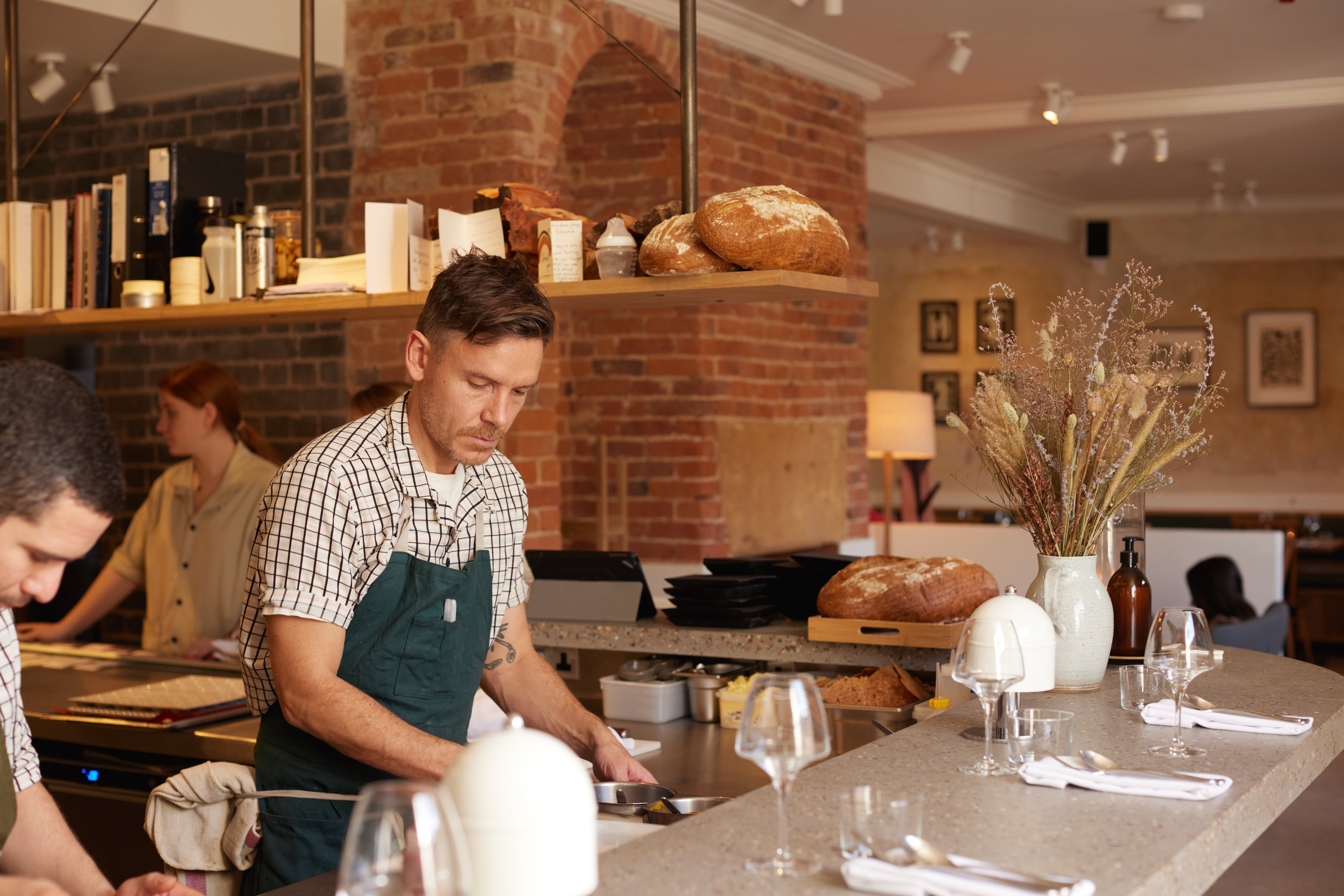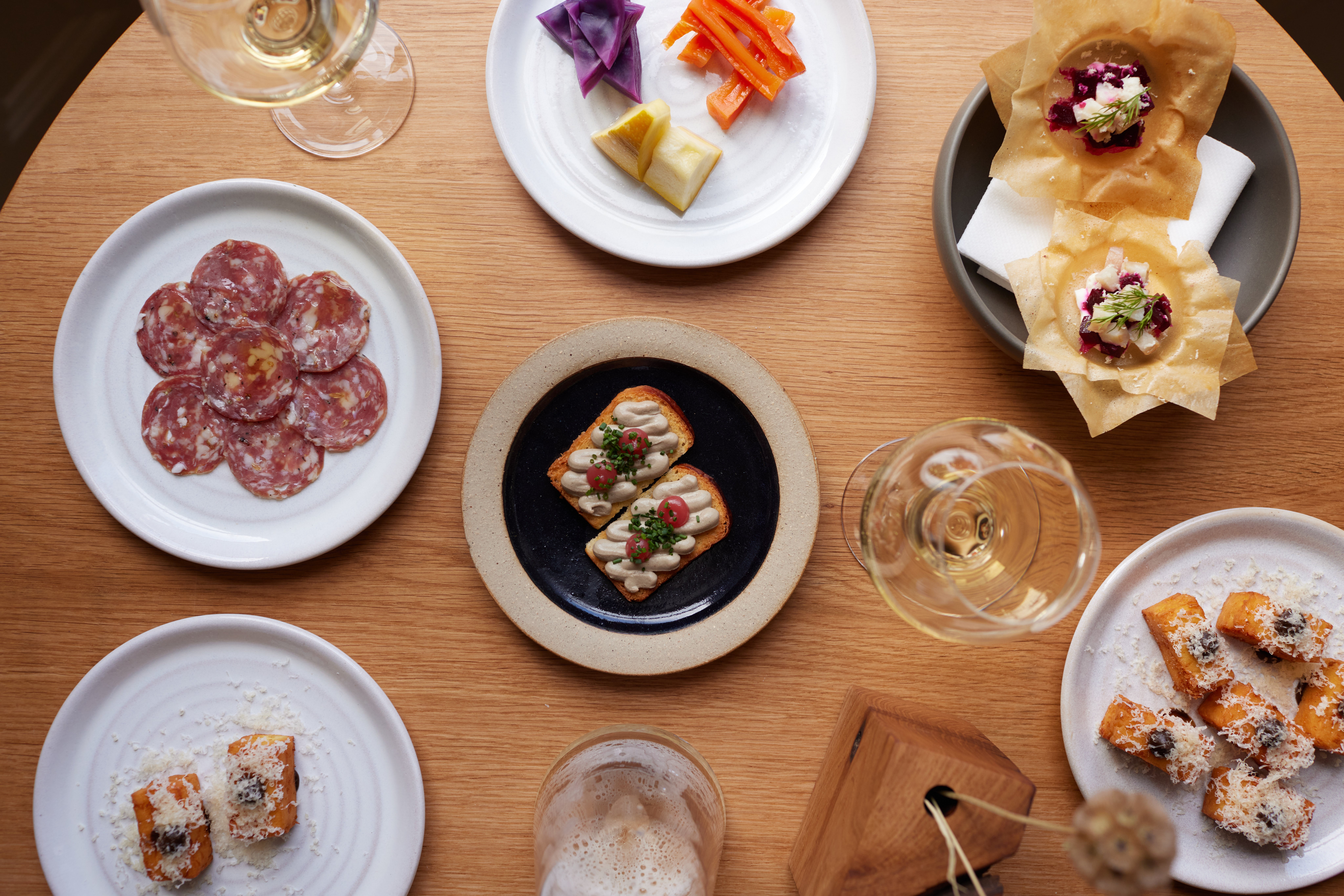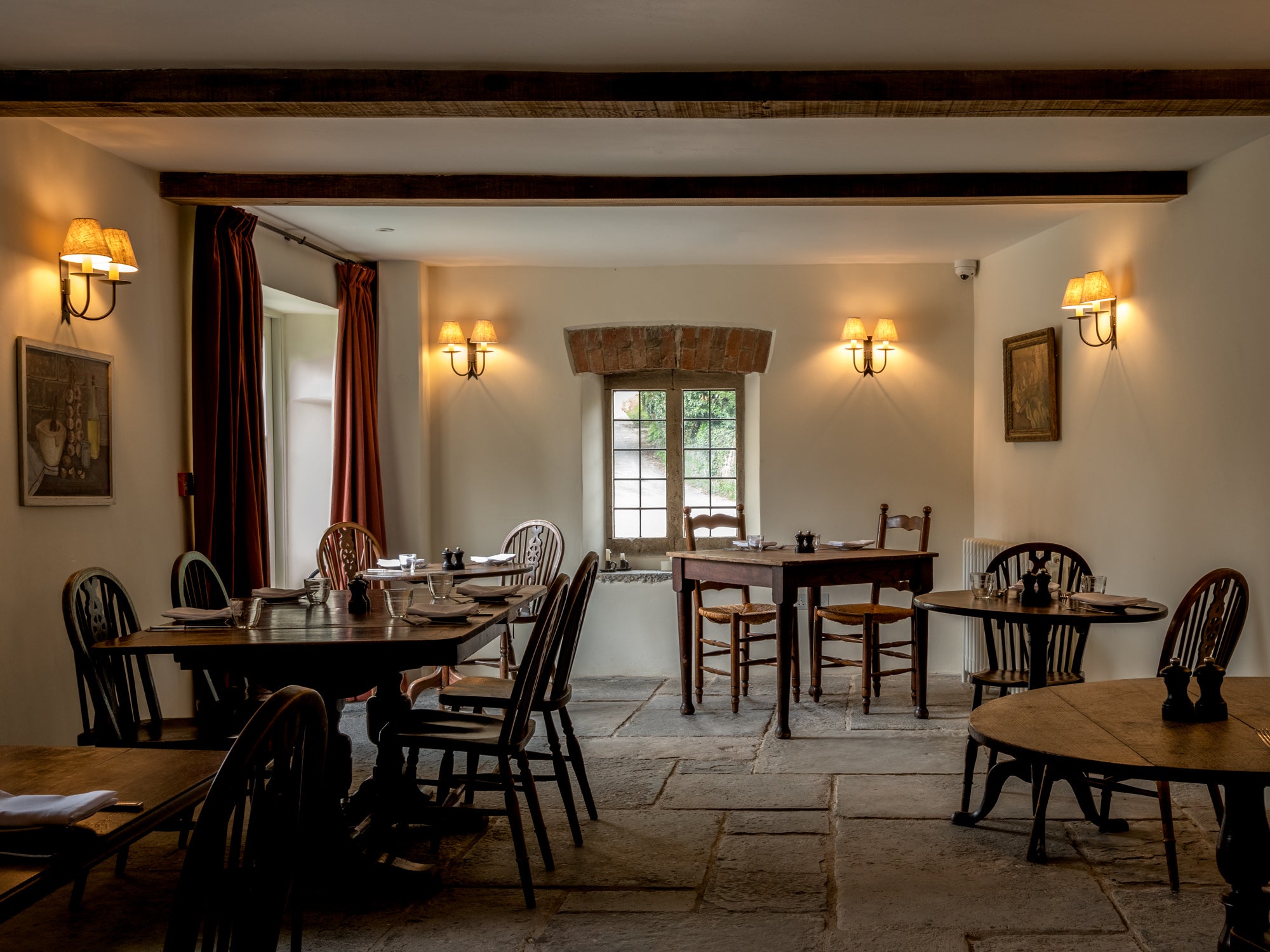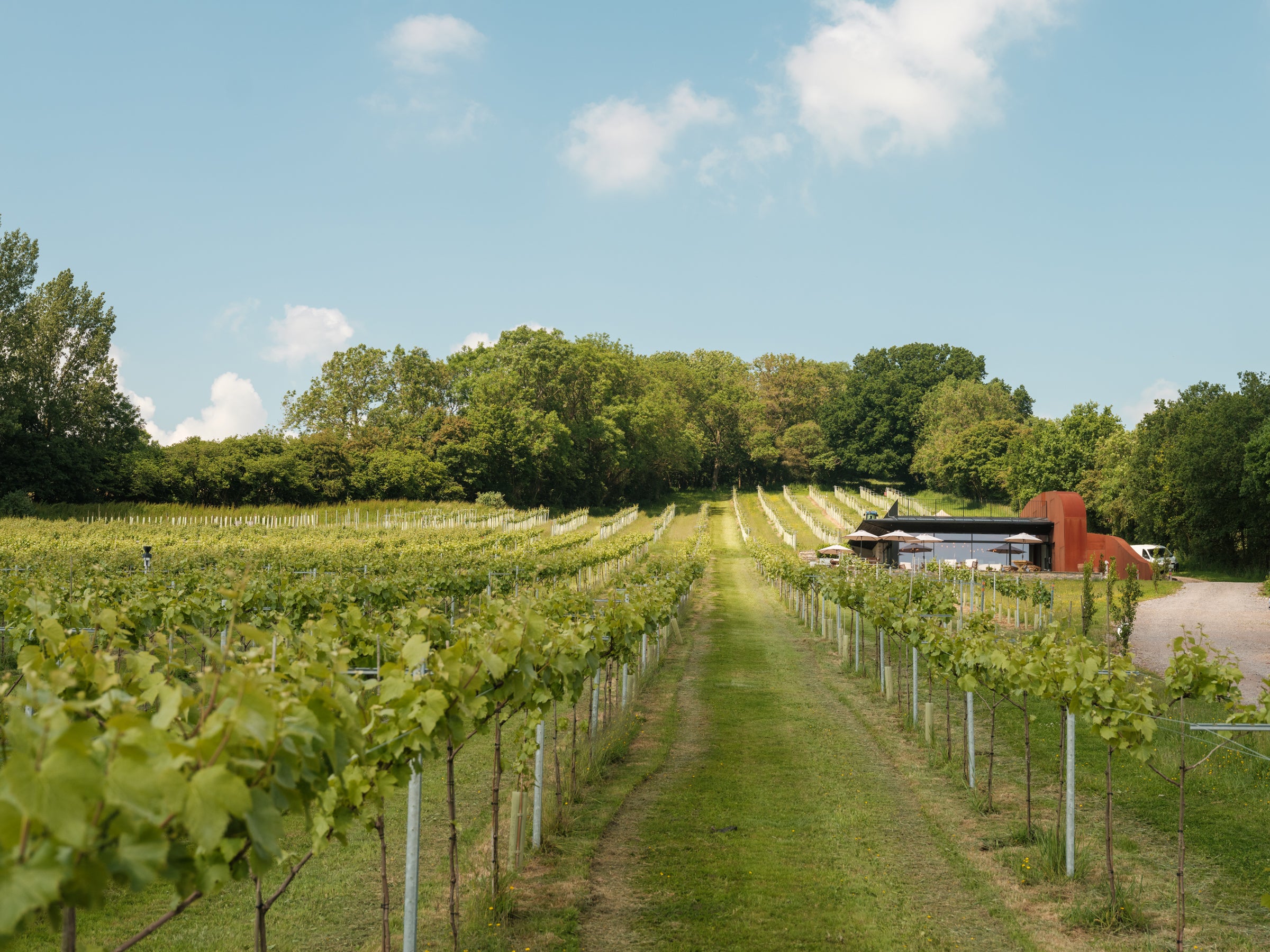The Independent's journalism is supported by our readers. When you purchase through links on our site, we may earn commission.
Forget Cornwall and the Cotswolds, Somerset is the UK food hotspot you’ve been missing out on
Rivalling the quality restaurants of Cornwall and the must-be-seen-in areas of the Cotswolds, Somerset went from somewhere to pass through to the hottest countryside weekend destination. Emma Henderson discovers where to go


Your support helps us to tell the story
From reproductive rights to climate change to Big Tech, The Independent is on the ground when the story is developing. Whether it's investigating the financials of Elon Musk's pro-Trump PAC or producing our latest documentary, 'The A Word', which shines a light on the American women fighting for reproductive rights, we know how important it is to parse out the facts from the messaging.
At such a critical moment in US history, we need reporters on the ground. Your donation allows us to keep sending journalists to speak to both sides of the story.
The Independent is trusted by Americans across the entire political spectrum. And unlike many other quality news outlets, we choose not to lock Americans out of our reporting and analysis with paywalls. We believe quality journalism should be available to everyone, paid for by those who can afford it.
Your support makes all the difference.There’s a burgeoning food community here, and we wanted to be early adopters,” says Nicholas Balfe, the owner of Holm restaurant with rooms in the village of South Petherton in southern Somerset.
“We’re at the beginning of something new,” he adds. And he’s right. Somerset is starting to cement itself as one of the go-to destinations for UK stays – it’s more affordable than the nearby celebrity-favoured Cotswolds, and less touristy than Cornwall. But how did it get here after long being considered just a drive-through county? Through its food, of course.
For Balfe, South Petherton, which is sandwiched between Ilminster and Yeovil, has the makings of some of its nearby more well-known towns such as arty Frome or bouji Bruton. It’s easy to see why South Petherton is on the brink, thanks to its honey-coloured historic buildings, which are draped in multicoloured bunting when I visit ahead of the carnival in September. There are also thatched cottages, with neatly potted pastel-coloured flowers in their front gardens; a grand 15th-century church; a market square with a village hall; and a busy village pub – all the hallmarks of a quintessential English countryside village. And being mere minutes off the A303, the main artery road through the South West, makes it far easier to access than it looks on a map – meaning it’s just a matter of time until this part of Somerset is an in-vogue area.

Balfe will be ready. His Holm restaurant opened in 2021, and late 2023 saw the addition of seven rooms upstairs, adding to the lure of spending the weekend there. Rooms have a muted, earthy palette, with lime-plastered walls and mismatched furniture – a world away from a classic country house hotel. “I wanted to create a metropolitan restaurant but in the countryside,” he says.
Thankfully, the restaurant isn’t out of reach for his bread-and-butter locals, nor does it only cater for the DFLs (Down from London). Lunch is £29 for three courses (£25 for two) – a price that hasn’t changed since its opening. There’s also an a la carte in the evenings, plus a tasting menu at weekends, which at £69 is fantastic value considering the impressive level of cooking.
Read more: Why autumn is the best time to visit Cornwall

The pull for Balfe to finally make the move from London to Somerset was when he realised that so many of his usual suppliers for his restaurants in the capital were in this pocket of the country already, including Westcombe Dairy, Montgomery Cheddar, Somerset Cider Brandy, and a Hebridean hogget supplier – leading him to think it was destined to be.
When he was in London, sales reps told him what produce was available on the phone, but now it’s right on his doorstep, meaning he’s far more connected and doesn’t need the middleman. “I know a grower has tomatoes, monk’s beard and anise hyssop herb all in the same polytunnel,” he says – a situation that inspired him to create a dish using those ingredients. It turns out to be one of the best dishes I’ve had all year, with its umami richness and end-of-summer fresh tang.

He isn’t the only Londoner branching out to these parts. Margot Henderson is the co-owner of east London’s Rochelle Canteen and The Three Horseshoes pub in Batcombe (just 40 minutes from Holm), which opened in 2023 with rooms upstairs. She is another chef who was attracted to the region’s bountiful producers, and has happily created another rural destination dining spot characterised by her usual rustic fare.
"Somerset was calling,” she says. “I fell in love instantly with the beautiful rolling hills. The area is overflowing with wonderful producers of incredible cheeses, meat and vegetables. As I began to dive into all the amazing possibilities of where I would source our produce, Max Wigram (The Three Horseshoes’ owner) said to me it would take a lifetime to really know all that Somerset could provide.”

Granted, Somerset’s fashionable roots began bubbling when Soho House’s Babington House opened way back in 1998. It’s since been bolstered by the fabulous Newt Hotel, though rooms there start from £855 for just one night. More affordable is The Talbot Inn in Mells, near Frome, which was one of the first (and best) iterations of the humble pub with rooms in 2013, and is largely credited for kickstarting the trend.
More recently, a turning point occurred in the county’s recent rise to fame, with a spike in staycations in a post-lockdown world. Since then, the little town of Bruton has continued to attract an increasing number of the well-heeled. Hauser & Wirth’s gallery and gardens, which opened in 2014, played a huge part in drawing people in. Owners Ursula and Iwan Wirth’s mini empire, known as Artfarm, now encompasses the brand new northern-Italy-inspired restaurant Da Costa, which I visit on the day of its opening. The menu takes grilling seriously: an impressive set-up includes dishes such as venison from the estate, and plenty of pastas (order the deliciously simple bigoli in salsa), while the gnocco fritto fried balls of cheese topped with mortadella are not to be missed.
Read more: The best London hotels for afternoon tea

Da Costa has slotted in between the newly imagined Roth Bar (it makes a mean martini) and the Farm Shop, while the gorgeous grade II-listed self-catering Durslade Farmhouse (sleeps 12) is just a few steps away, with its achingly cool and endearingly eccentric interiors. There are also a number of farms (one has wagyu cows), a vineyard and a market garden, but not all are open to the public. Produce is dished up in the restaurant and sold in the shop, so you’ll unlikely leave empty handed either – I suggest at least one bottle of the rosé sparkling wine comes home with you.
Back in the centre of Bruton is the Georgian townhouse Number One Bruton hotel. It opened its doors in 2020 when chef Merlin Labron-Johnson took up residence, with his restaurant Osip next door using his own produce from his nearby farm (a lockdown project), and quickly earned a Michelin star. After it recently relocated nearby for more space, Briar has taken its place, the latest in what feels like a near-constant stream of openings in the area as chefs are drawn to Somerset like moths to the flame.

Taking the reins at Briar is Sam Lomas (a previous River Cottage rising star chef), who champions farm-to-table cooking and loves Somerset for its “strong retention of food heritage and its rich tradition of cider production alongside the amazing quality of its dairies”. Highlighting this return to tradition, Lomas says these skills have been “passed down through the generations and are now flourishing even more”.
It’s not just about cider in Somerset – it’s also becoming a hotspot for viticulture. Smaller vineyards of just a handful of acres are producing great sparkling and still wines, like Wraxall Vineyard, whose first planted vines are 50 years old. Near the vineyard, I stock up with a mixed case of my favourites, which includes their excellent Somerset sparkling and Bacchus Reserve. Then, trundling the windy backroads, I notice a few handmade signs for other small vineyards popping up (which I’ve made a note of to visit next time), showing promise for Somerset as a new wine territory.

From here, I drive just 15 minutes down the road to the nearby village of Sparkford, where Somerset locals Jules and Steve Horrell have created a rural dinner party, Horrell & Horrell, in their garden by converting an old cow barn that’s been styled to feel more like an Italian rustic farmhouse. Tickets sell out months in advance after it instantly became one of Somerset’s best restaurants after opening in 2023. Their hyper-local ingredients are gathered via a local producers’ WhatsApp group (and from their own garden) where availability dictates the menu and producers’ names make it onto the menu, with the likes of “Cam’s courgettes” and “leaves from Tia”, and Steve cooks everything over fire right by the barn.
Read more: The best UK vineyards to visit during harvest season
I also head to the recently reincarnated The Pony pub and cookery school, which can be found down a single-track lane surrounded by bucolic countryside in the village of Chew Magna, which feels very rural but is only 30 minutes from Bristol in north Somerset. It’s owned and run by born-and-bred chef Josh Eggleton and his sister Holly Eggleton, who some will remember ran the pub in its former life as the Michelin-starred The Pony & Trap. Now, they’re also behind the veg-led Root restaurants in Bristol and Wells, the fish-and-chips outposts Salt & Malt (Bristol and Chew Valley), and The Kensington Arms pub in Bristol.

In the restaurant, the floor-to-ceiling glass windows frame Somerset’s rolling hills beyond, while the menu is teeming with local ingredients as well as those grown in the garden below, such as courgettes, beans and herbs. It also offers a mid-week set menu for a very reasonable £25.
The pub is just a few minutes from Wilding Cider (the owners of which Holly says she and Josh are lucky enough to be great friends with) – one of the leaders in the fine cider movement, where producers are making more traditional cider and even using the traditional champagne method to make sparkling cider, too. Of course it’s available here, and Wilding is popping up on drinks menus (including kicking off Holm’s wine-pairing menu) much further afield than Somerset’s borders.
What is it that really sets Somerset apart? “It’s incredibly luscious, rich and fertile... it’s so verdant and alive,” says Balfe. And it’s those verdant valleys so rich in quality food produce that chefs and visitors are, evidently, so willing to relocate and travel for. Somerset’s so bountiful that Margot’s right: you’ll need a lifetime to get to it all – but these places make a good starting point.
Read more: This ivy-clad Rome neighbourhood is where the locals come to eat
Join our commenting forum
Join thought-provoking conversations, follow other Independent readers and see their replies
Comments